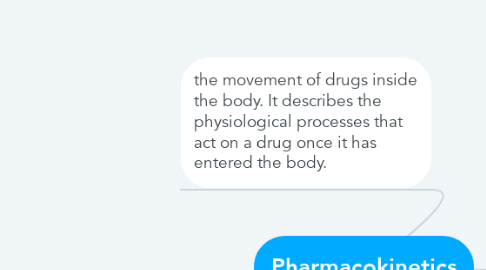
1. Absorption
1.1. movement of a unchanged drug proceeds from its site of administration into the blood steam
1.1.1. small molecules diffuse more rapidly than large molecules
1.1.2. fat loving substances cross the cell membrane more easily and rapidly
1.1.3. larger surface area = greater and rapid absorption
1.1.4. oral drugs mainly absorbed in the intestines
1.1.5. high blood flow = facilitate absorption, low blood flow = impede it
2. Distribution
2.1. process of reversible transfer of drug from one location (site of administration) to another
2.1.1. Barriers = fat: tissue can be involved in drug binding. fat acts as a reservoir for lipophilic drugs. the selectivity of drug binding to tissue can be advantageous.
2.1.2. Barriers = BBB: the capillaries of the cerebral circulation are different to normal ones. the endothelial cells create a barrier between the capillaries and the brain tissue. only substances that are lipophilic or that are actively transported can pass into the CNS.
2.2. volume of distribution: A measure of the extent of penetration of a drug into various fluid and tissue compartments.
3. the movement of drugs inside the body. It describes the physiological processes that act on a drug once it has entered the body.
4. Metabolism
4.1. purpose is to alter the chemical properties of drugs to make them less lipophilic and more readily excreted
4.1.1. 2 Phases
4.1.1.1. Phase 1: enzymes modify the drug through: oxidation, reduction and hydrolysis. Cytochrome P450 family is an important group of enzymes that enable many drugs to be broken down
4.1.1.2. Phase 2: is where the drug or its metabolite is joined with a polar molecule to enable excretion.
4.1.1.2.1. water soluble drugs are excreted unchanged
4.1.1.2.2. once metabolised to render it hydrophilic, it can be excreted by bile or urine without significant reabsorption

